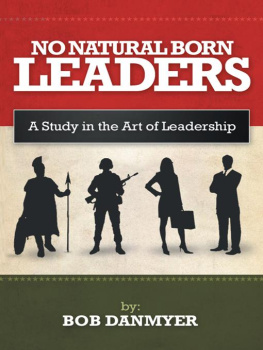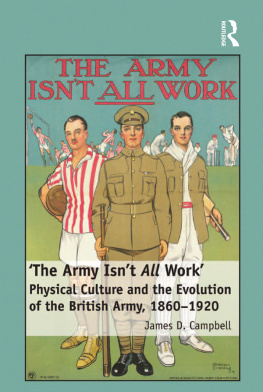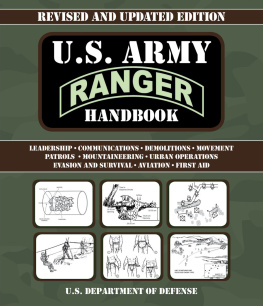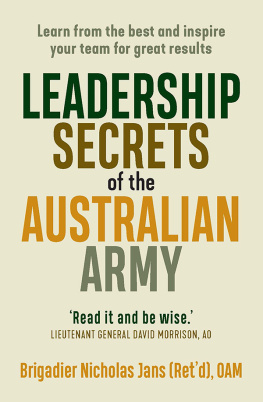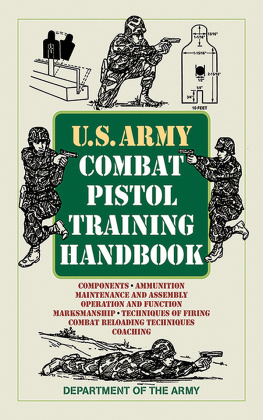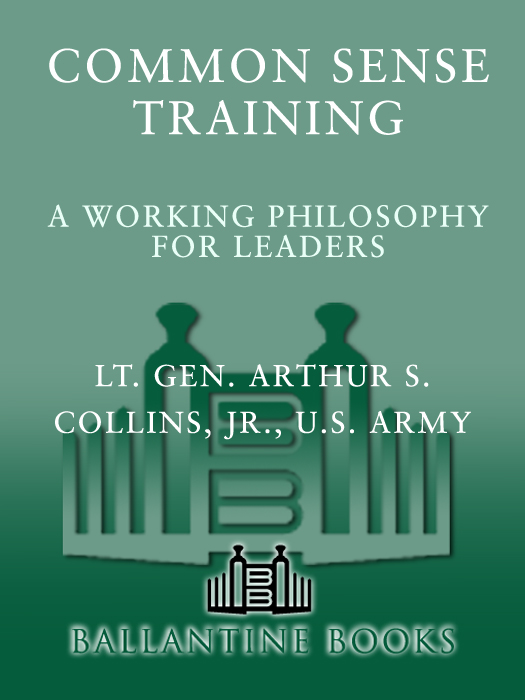Copyright 1978 by Presidio Press
Published by Presidio Press
505 B San Marin Drive, Suite 300
Novato, CA 94945-1340
All rights reserved. No part of this book may be reproduced or utilized in any form or by any means, electronic or mechanical, including photocopying, recording, or by any information storage and retrieval systems, without permission in writing from the publisher. Inquiries should be addressed to Presidio Press, 505 B San Marin Drive, Suite 300, Novato, CA 94945-1340.
Library of Congress Cataloging-in-Publication Data
Collins, Arthur S., 19151984
Common sense training.
1. Military educationUnited States. 2. United States. Army. I. Tile.
U408.3.C64 355.5O973 77-19077
eISBN: 978-0-307-78852-8
v3.1
To the soldier,
from whom I learned so much,
and to whom we owe so much.
Contents
List of Figures
Introduction to the Second Edition
When the United States Army dominated and crushed the vaunted Iraqi armed forces in a hundred-hour blitzkrieg, many civilian observers wondered how it happened. How did an army that crawled home from Vietnam with its fighting prowess in tatters become the world standard for ground combat forces? Many attributed the resurgence to wonder weapons, or enthusiastic popular support, or good generalship. Indeed, all of these contributed to victory in the Gulf War. But in the opinion of professional soldiers, the major cause for the great American ground triumph can be summarized in three words: common sense training. If you wonder how Americas Army won so convincingly in the Gulf, this book offers the reason why.
Written by Lt. Gen. Arthur S. Ace Collins and first published in 1978, Common Sense Training is simply the best book ever written on how to train American soldiers. In lucid, clever prose punctuated by terrific anecdotes and provocative examples, the general describes the tough, realistic training techniques that our Army used to prepare for war in the Gulf and still uses today. Written for an army struggling with dwindling strength and reduced funding, Collinss book speaks eloquently to todays force, which faces so many of those same challenges.
For my own part, I have seen this camouflage-covered little gem on so many bookshelves and in so many rucksacks that I thought for a long time that the Army issued Lieutenant General Collinss masterful work. In the most important sense, the Army granted the book an even greater tribute by adopting outright so much of Collinss thinking. As old readers will rediscover, many of General Collinss key ideas are now U.S. Army policy. New readers, already schooled in present-day Army training techniques, can see the logic and insights that underlie these now-accepted ideas. Unlike long-winded field manuals, however, you can actually read this book. Its funny. Its interesting. And if you try this stuff, it works.
This second edition introduces Gen. Ace Collins to a new generation of soldiers, students of military affairs, business leaders, and concerned citizens in general. The authors thoughts are as timely today as when written. You can read hundreds of books about war and how to fight. But this book, the only one of its kind, tells you something more importanthow to win.
Daniel P. Bolger
Colonel, Infantry
United States Army
Publishers Note
This edition of General Collinss seminal work on training military units is being reissued without change to the main text, because in the twenty years since it was first published in 1978 it has become a genuine classic, more widely read than any other book like it. It is as indispensable today as when it was first published (as Dan Bolgers new introduction attests). Naturally, with the passage of time, some things have changed, even in the Army.
This note lists these changes in page-by-page order. There are also a few paragraphs that contain information that is now obsolete. Rather than deleting them, we have employed a gray screen to highlight them for the reader. On these and other detailed notes, we are indebted to Colonel Daniel P. Bolger, USA, who reviewed Common Sense Training for changed procedures, modified nomenclature, and other anachronisms.
DETAILED NOTES
. The Annual General Inspection is no longer conducted in the U.S. Army. Today, a similar inspection is done by the chain of command as a Command Inspection Program (CIP).
. Many of the complaints about Army schools remain valid, but changes in the officer basic and advanced courses now stress small group instruction by experienced former commanders.
. U.S. Army units are no longer nuclear capable.
. General Collinss comments on this page remain valid today, despite some minor changes to the readiness reporting system. The discrepancies between AR 220-1 and the technical manuals no longer exist, but there is still confusion between Fully Mission Capable (FMC) and 10/20 (in accord with the-10 and-20 technical manuals) standards. These issues still hobble sound maintenance, and the matter of integrity still arises.
. General Collins refers to first echelon maintenance. There were actually five echelons when this book was written: 1st = company or drivers. 2nd = battalion or unit mechanics. 3rd = direct support unit or technicians. 4th = general support or post civilians. 5th = depot or arsenal. Although officially out of date, the idea persists in the Army today. Mechanics regularly refer to direct support as third shop.
. The ARTEP is now commonly called an EXEVAL (external evaluation), if done by another unit or a CTC (combat training center) rotation if done at Fort Polk (JRTC), Fort Irwin (NTC), or Hohenfels (CMTC). The term ARTEP still survives as ARTEP-MTP (Army Training and Evaluation Program-Mission Training Plan), the evaluation standards for tasks like assault and defend.
. Please see the footnote. Current training doctrine is contained in the following Army publications: FM 25-100 Training the Force (1988), FM 25-101 Battle Focused Training (1990), FM 25-1 Training (1984), FM 25-2 How to Manage Training in Units (1984), FM 25-3 How to Conduct Training in Units (1984), FM 25-4 How to Conduct Training Exercises (1984), FM 25-5 Training & Mobilization for War (1985). These continue to be used, although issued prior to the 25-100/25-101 series.
. Current examples of inspection/courtesy/assistance teams are pre-Ranger cadre, unit school cadre, standing teams to check maintenance of machine guns and radios, range inspectors, and barracks inspectors. Umpire teams are now called observer/controllers (O/Cs).
. FM 25-100/101 requires training schedules to be locked in six weeks early. In reality, changes are made in too many units, unless the commander really puts his/her foot down.
. Equally important is locking in resources (land, ammunition, and training aids) when the schedule is made. FM 25-100/101 is emphatic about this.
. Relative to timing, the current buzzwords are Train to Standard, Not to Time, but experience tells unit commanders what the usual times are.
. The two-up rule is now doctrine (25-100/101 series).
. The current doctrine (25-101 and MTP manuals) refers to STX (situational training exercise) lanes based on this chapter. General Collinss technique has thus been institutionalized.




